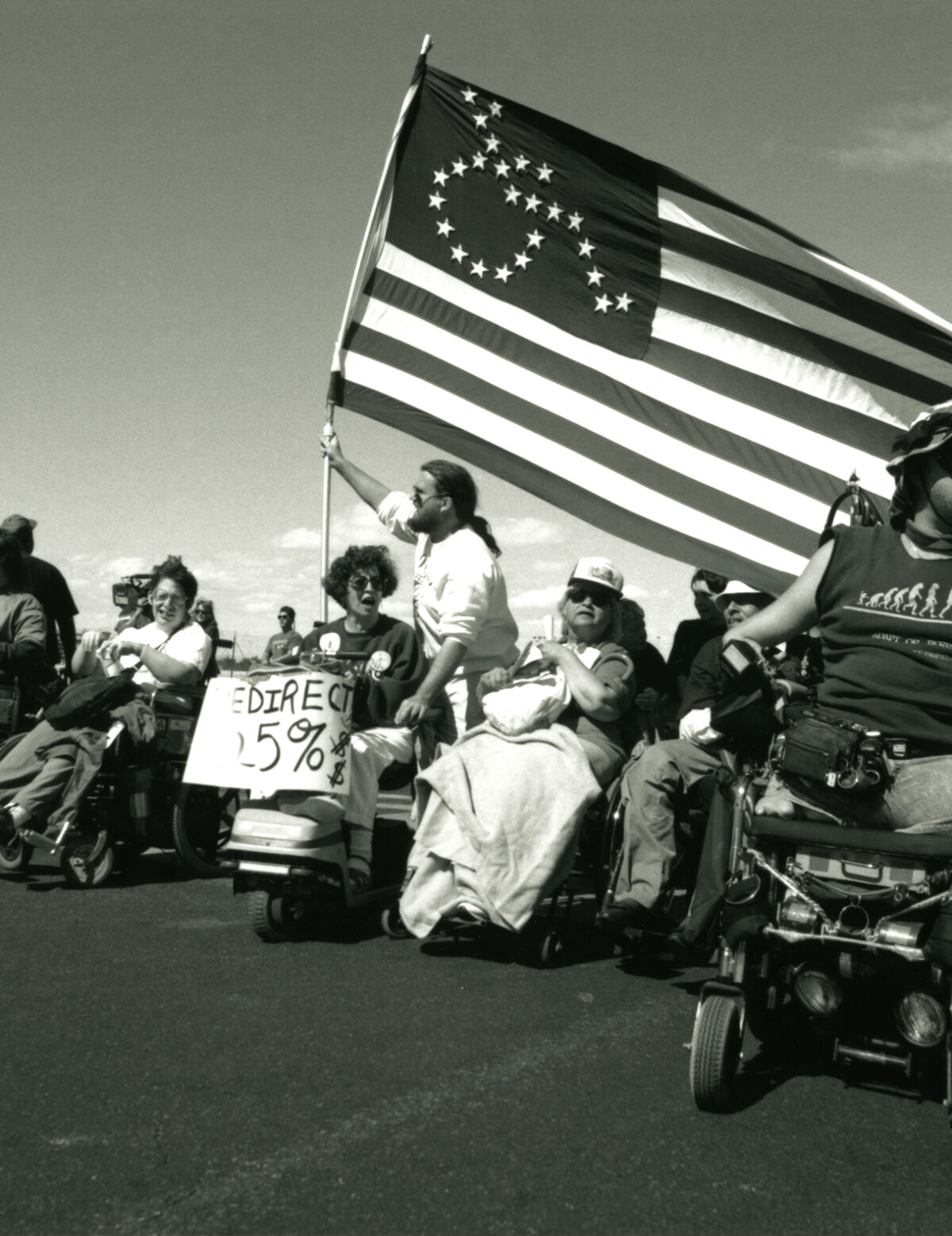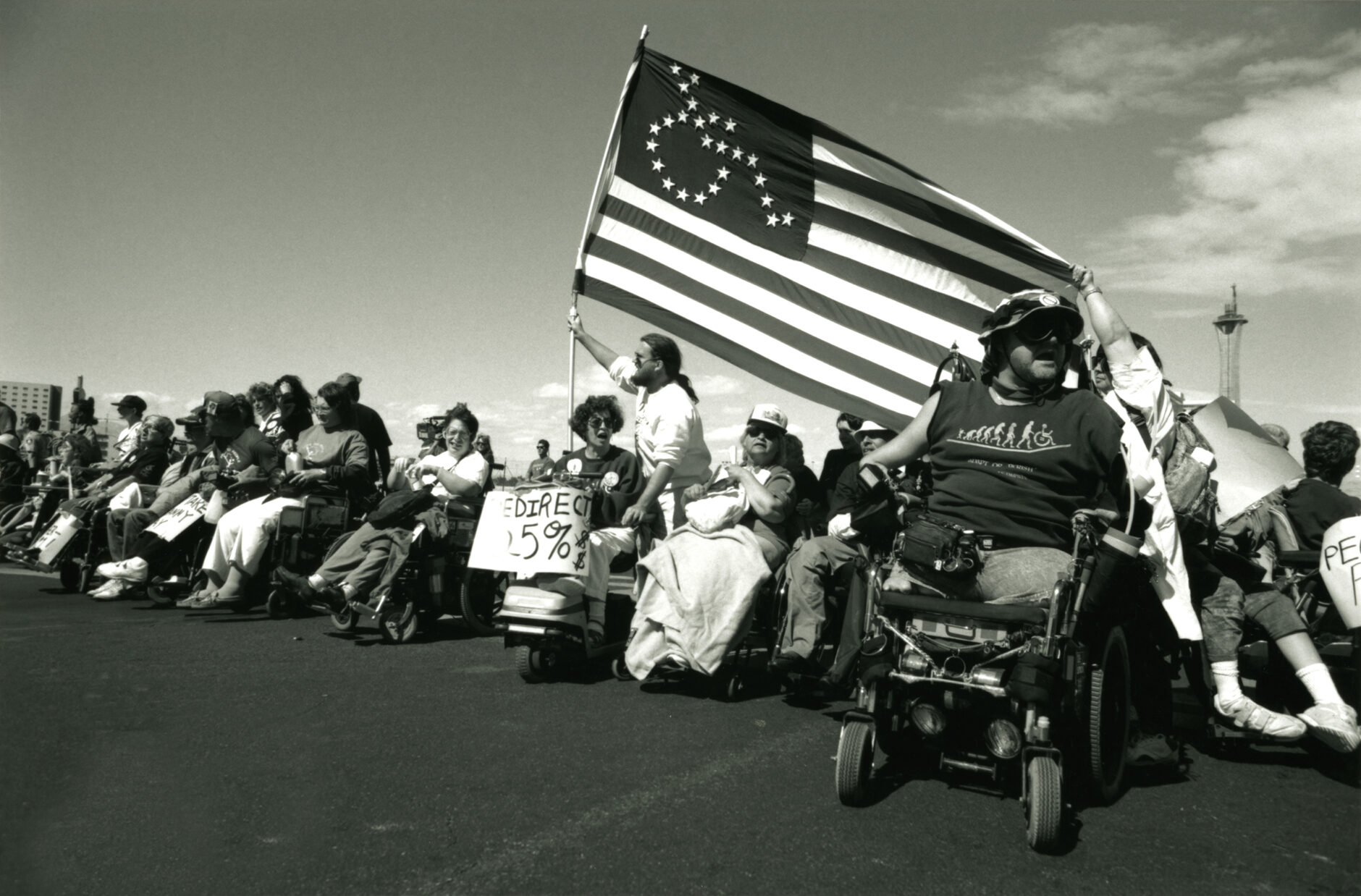Homelessness affects over half a million people annually in the United States and is rising. Therefore, it’s essential to include those who have experienced homelessness in accessible, affordable, inclusive housing. Moreover, recent data shows 45% of the US homeless population lives with disabilities. Addressing their housing needs means increasing resources for accessible, affordable, and inclusive housing.
How Disability and Homelessness are Connected
Disabled people are 4x more likely to experience homelessness due to factors like:
Cost: People with disabilities reliant on Social Security Income would need to spend 131% of their entire income to afford basic housing. Source
Access: Less than 6% of the housing market is accessible to people with disabilities. Source
Discrimination: Over 55% of housing discrimination is based on disability, more than any other type of housing discrimination. Source
Supply: Only 12% of adults with intellectual disabilities rent or own their own homes. Source
The Current State of Homelessness
The U.S. Department of Housing and Urban Development (HUD) defines homelessness as individuals and families lacking a fixed, regular, and adequate nighttime residence; those imminently losing their primary residence; unaccompanied youth; and those fleeing domestic violence without alternative housing options. Those at risk of homelessness include individuals and families with an annual income below 30% of the median family income, insufficient resources, and one or more risk factors such as recent housing instability. Source
In 2023, homelessness in the US spiked 12% (71,000 people) to more than 650,000 unhoused people, the highest number recorded since data collection began in 2007(source). HUD’s point-in-time estimates, an annual snapshot of the number of individuals in shelters, temporary housing, and in unsheltered settings, show an increase in nearly every state.
An article titled, Record Homelessness amid Ongoing Affordability Crisis, noted “the most fundamental driver of the nation’s growing homelessness is the ongoing housing affordability crisis that has left a record number of renters cost-burdened, spending more than 30% of income on housing and utilities.” For more information on the affordable rental crisis see: America’s Rental Housing 2024. Pandemic-era protections have expired and eviction filings have returned to pre-pandemic levels. The median amount of leftover income that a renter household has after paying for housing and utilities has hit an all-time low, leaving many people increasingly at risk of homelessness.
HUD data shows the rise in overall homelessness includes a sharp increase in the number of people who became homeless for the first time. Between federal fiscal years 2021 and 2022, this demographic increased by 25%, even as the number of people who exited homelessness to permanent housing grew by 8%. This rise in first-time homelessness is likely attributable to a combination of factors previously discussed, recent changes in the rental housing market, and the end of pandemic protections including programs focused on preventing evictions and housing loss.
Advocating for Increased Resources for Affordable, Accessible, and Integrated Housing
We need funding for both disability housing AND housing for those experiencing or at risk of homelessness. The work of homelessness and disability advocates each supports the other. Collaborative advocacy ensures access to inclusive housing for all. Advocacy organizations should collaborate to address these dual and intersecting issues as a unified front while advocating for resources in each area to address the diverse needs. Providing resources ensures individuals with disabilities, including those who have experienced homelessness, can access supportive housing environments, promoting stability and community integration.
- Unified Advocacy: Collaboration between disability housers and homeless services can reduce stigma and enhance policy advocacy for both groups.
- Combined Resources: Joint efforts create comprehensive support for both groups. Collaborative efforts can lead to more comprehensive support systems that address both homelessness and disability-related needs.
Shared Desire for Integrated Communities
Permanent Supportive Housing (PSH) is a housing model designed to provide long-term, affordable housing solutions combined with supportive services for individuals who are chronically homeless, especially those with disabilities or other complex support needs. PSH is often not integrated and only houses people that have experienced homelessness.
The strengths of PSH could be enhanced by integrating their funding into mixed community housing. Similar advocacy for more integration into mixed communities is popular among disabled housers. Integrated and inclusive communities offer unique benefits like opportunities for social integration, reduced isolation, and work to dispel myths and stereotypes about unhoused and disabled people. Integrating PSH into mixed communities fosters inclusivity and reduces stigma.
Ways to Create More Integrated Communities:
Reducing Bias in Resident Screening
In a recent Learn Center article, we discussed how bias and stereotypes can impact the tenant selection process, particularly for those with histories of homelessness or involvement with the criminal justice system. HUD provides guidance to ensure fair and objective screening procedures. This includes:
- Not automatically denying housing based on criminal convictions, except where prohibited by federal law.
- Disregarding non-relevant criminal history, such as older or non-violent convictions.
- Conducting individualized assessments to evaluate actual safety risks.
- Allowing applicants to provide mitigating information regarding their background.
These practices help reduce discrimination and increase housing access for typically marginalized groups like the unhoused.
Debunking the Stigma of Homelessness & Challenging Criminalization of Homelessness
There are many misconceptions about homelessness and regressive policies that contribute to stigma and discrimination. For example, criminalization of homelessness unfairly reinforces the stereotype that unhoused people are dangerous. Laws and policies that penalize behaviors associated with homelessness, such as sleeping in public places or panhandling, further reinforce this misconception. It’s important to recognize that individuals experiencing homelessness come from diverse backgrounds and face a variety of challenges. Inclusive housing for all dismantles stereotypes.
Funds that Incentivize Housing for both Disabled Residents and those that have Experienced Homelessness:
Many public funds, including a state’s allocation of Low Income Housing Tax Credits (LIHTC), incentivize “Special Needs Housing”. “Special Needs Housing” encompasses a range of populations such as people with disabilities, veterans, those living with HIV, individuals who have experienced homelessness, and domestic abuse survivors. In an increasingly competitive funding environment, it is imperative to partner with service organizations that serve these diverse populations. This collaboration not only achieves the benefits of integrated, accessible, and affordable housing but also maximizes scarce resources. An example of a potential partner is your local Continuum of Care (CoC), a regional or local planning body established by HUD to coordinate housing and services funding for homeless families and individuals. CoCs promote community-wide commitment to ending homelessness by funding outreach, permanent housing, supportive services, and homelessness prevention programs.
Conclusion
Addressing the homelessness crisis requires not only providing accessible, affordable, and inclusive housing, but also challenging the stereotypes and biases associated with homelessness. The intersectionality of homelessness and disability highlights that advocating for one group inherently supports the other. By building more funding streams for both, organizations can better address the variety of individuals’ housing needs. Joint efforts can strengthen advocacy for funding and policy changes, allowing programs to leverage resources more effectively and create comprehensive solutions for these interconnected issues – including more accessible, affordable, and integrated housing choices.
Additional Resources:
- Resources to debunk stereotypes and learn more about the experience of unhoused individuals:
- Success stories of cities reducing homelessness including partner cities of The Kelsey – San Antonio, TX and San Jose, CA
- Homelessness Data & Trends
- Homelessness is a Housing Problem
- Advanced Age Can Increase Risk of Housing Insecurity and Homelessness
- Record Homelessness Amid Ongoing Affordability Crisis | Joint Center for Housing Studies

